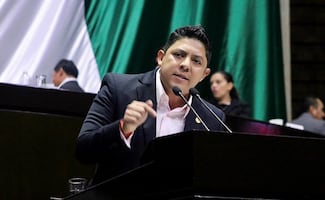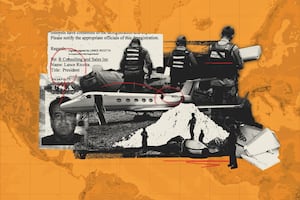Más Información

En SLP nunca ha existido una gobernadora y ahora hay una posibilidad real que así sea, asegura Ricardo Gallardo tras aprobación de "Ley Esposa"

Morena analiza disminución de pluris y elección popular de consejeros del INE: Monreal; serán revisadas en la reforma electoral, dice

Rastro de jets vinculados al narcotráfico lleva a un vendedor en California… y a un punto ciego de la regulación aérea en Estados Unidos

Secretaría Anticorrupción sanciona a dos empresas por buscar contratos con información falsa; imponen multa de miles de pesos

Banxico se despide de 2025 con otro recorte a la tasa de interés; queda en 7% por ajuste de 25 puntos base
A few years ago, the United States ended a generous immigration policy for Cuban residents but this hasn't discouraged hundreds of them from traveling through Mexico , on a quest to be granted asylum in the U.S.
Moreover, poverty and political repression are the main reasons cited by Cubans for migrating from the Communist island but some in Ciudad Juárez say news of the caravans also motivated them, giving them the impression the United States was accepting migrants , although this is not the case.
“The person who created the media coverage and who drove the issue of the caravans has been President Trump ,” Tonatiuh Guillen , the head of Mexico’s National Migration Institute , said on local radio last week.
Cubans
have added to the pressure on overwhelmed shelters in Mexico and border authorities in both Mexico and the United States.
On Friday, the White House said that over 100,000 people were apprehended or presented themselves to authorities in March, calling it the highest number in a decade and as a result of the recent flow of Central American migrants , Trump has threatened Mexico with a border shutdown or tariffs .
Many Cubans reached northern Mexico in recent months and ultimately traveled with smaller groups, nevertheless, a caravan of 2,600 migrants is being contained by authorities in southern Mexico , the largest this year, includes dozens of Cuban migrant s. Mexican immigration officials said they deported at least 60 Cubans on Friday.
In Ciudad Juárez , Cubans represent between 75% to 80% of the 3,600 migrants in town, said Enrique Valenzuela, director of the state commission for population.
Moreover, this bottleneck in Mexico highlights a new reality: Cubans do not enjoy the same advantages they once did in the U.S.
“For the first time this year, Cubans are being treated like everyone else,” said Wilfredo Allen, a Miami-based lawyer who works with Cuban migrants. “The special door for the Cubans has already closed.”
In 2017 , U.S. President Barack Obama ended the “wet foot, dry foot” policy , which allowed Cubans who reached U.S. soil to stay but deported if intercepted at sea, triggering a decline in immigration from Cuba .
In the first five months of fiscal-year 2019 , 6,289 Cubans turned up at ports of entry on the U.S.-Mexico border without papers. That number is nearly double the total registered in the fiscal-year 2018, according to data from U.S. Customs and Border Protection.
Cubans
are also facing a difficult scenario in Mexico , and many are dismayed by the long wait they find, shelter directors say, and they are increasingly concerned about safety after reports of Cubans going missing in Mexico. Few leave the shelters , 10 migrants said in interviews to Reuters.
Experts
do not expect the f low of Cuban migrants to decline anytime soon. Obama made it easier for Americans to travel to the island , generating new business but that money dried up after Trump tightened the rules, said Pedro Freyre , a lawyer who studies the U.S.-Cuba relationship.
What is more, a gradual opening of the island’s private sector triggered a backlash from conservatives, creating headaches for small businesses, Freyre said.
gm
Noticias según tus intereses
[Publicidad]
[Publicidad]









